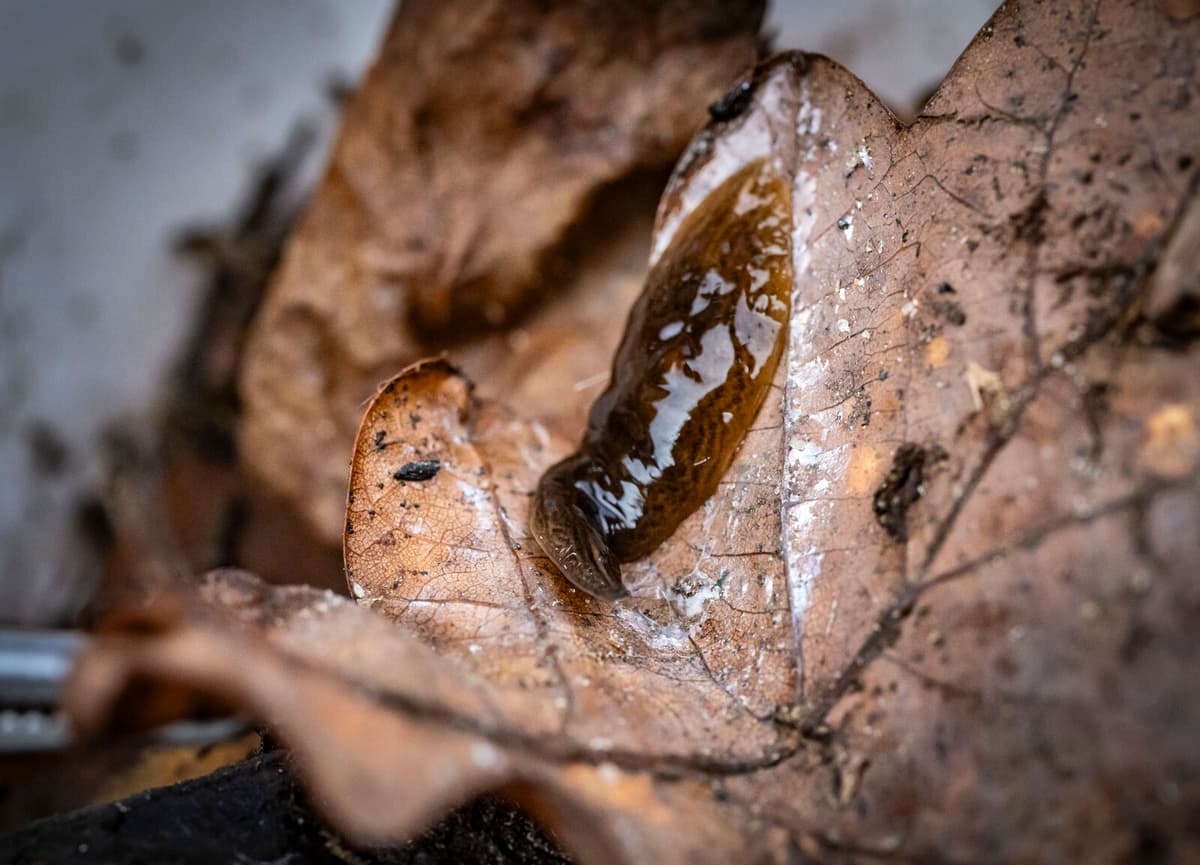With a wagging tail, the Labrador Retriever Aila sniffs her way through the plantations in Öresundsparken in Helsingborg. The reward is both carrot treats and praise if she finds a flatworm, so she is strictly focused.
Aila is one of seven search dogs that received special training in flatworm detection between January and March and now her services are in demand.
There are many companies that take this seriously, says Aila's owner Helen Persson.
It's not easy for us to find them with our eyes and it's not easy for the dogs either. But if we can do both, we'll find more than we would otherwise.
Eats earthworms
The flatworm is flat and inconspicuous, and for humans, it's difficult to detect since it usually stays just below the surface. Here, it can cause significant damage, as it kills and eats earthworms.
Marie Koenen, who trained Aila and the other search dogs in flatworm detection, shows a film on her mobile phone of how it looks. The flatworm wraps itself around the earthworm and secretes a substance.
It feels a bit kinky to watch it. It dissolves the earthworm.
If the flatworm spreads widely and kills large numbers of earthworms, it risks having a significant impact on soil fertility.
No natural enemies
The problem is that it, as far as is currently known, lacks natural enemies in Sweden, explains Henrik Lange, coordinator for invasive species at the Environmental Protection Agency.
The first discovery of the flatworm, which has the Latin name Obama nungara, was made in a plantation in Malmö in November last year. In December, the government decided to give authorities the right to take emergency measures. As of January 7, it has been forbidden to spread it further in Sweden.
We didn't want a new killer snail, says Henrik Lange.
But imported plants are now pouring in, and Marie Koenen testifies that the dog team finds worms almost every time they're out.
Only in Sweden
So far, it's only in Sweden that the ban on spreading applies, which creates problems for importers, but a decision at the EU level is expected after the summer.
It would greatly facilitate things if the other countries also listed it, says Henrik Lange.
The large-scale cooperation within the gardening industry makes him breathe a sigh of optimism despite everything.
Yes, we're doing something to put a stop to it. Then how well it goes, we can't say until 2025 is over.
The flatworm Obama nungara originates from South America but is now found in many European countries. Those who buy a new garden plant are urged to keep their eyes open.
When you buy a new plant: Ask the staff how they control the plants.
When you get the plant home: Check under and in the pot. They often sit between the soil and the pot. Feel free to shine a flashlight.
If you find worms: Put them in a jar and pour boiling water over them. Wait a few days before planting and continue to search for worms.
Avoid spilling soil: The soil from an infested plant can contain egg capsules. They look like small peppercorns, first red and then dark brown. Each capsule can contain up to 20 new worms. The soil can also contain newly hatched mini-worms. Therefore, throw away soil spills in containers for combustible waste or sanitize the soil through heat.





